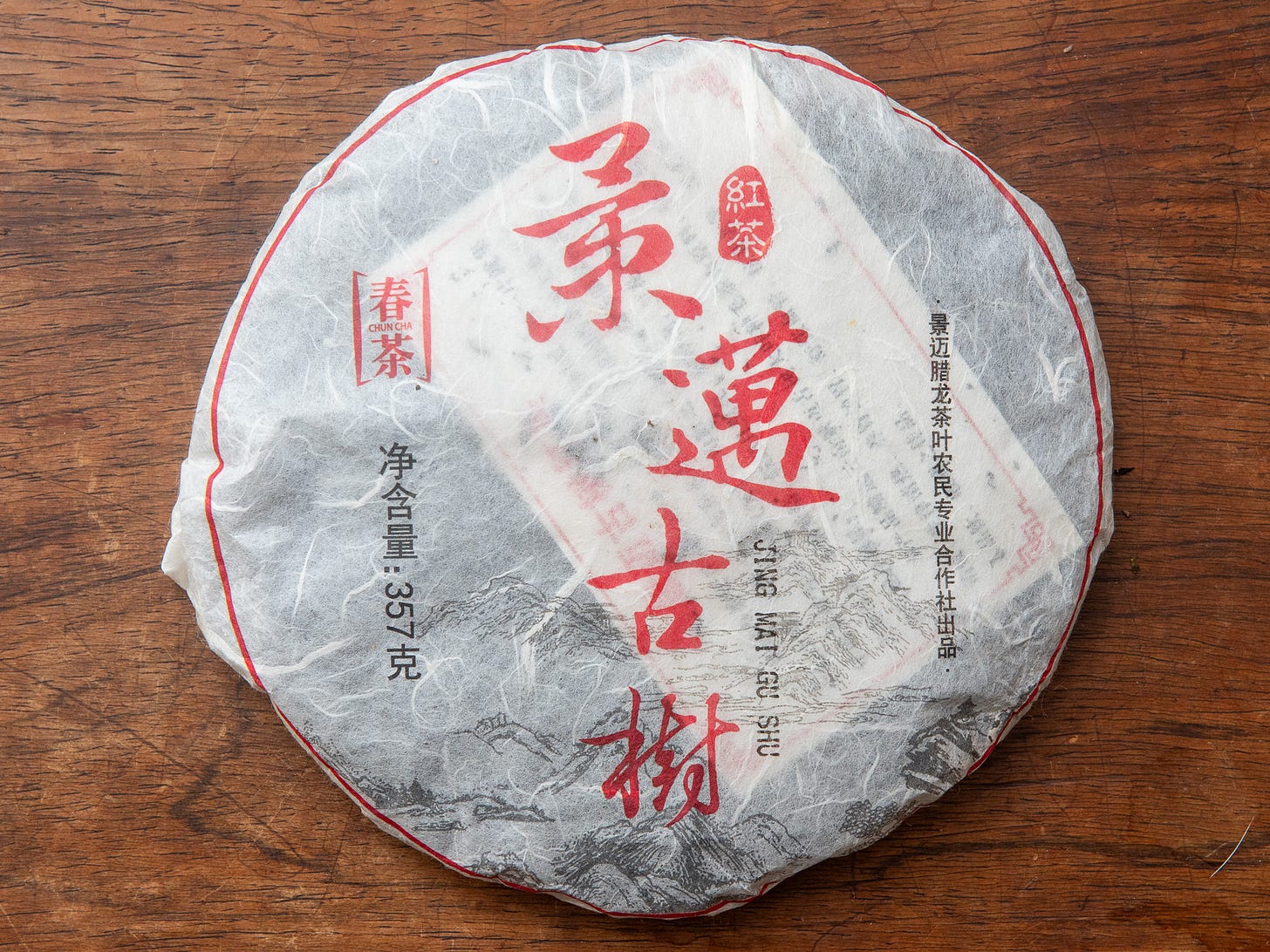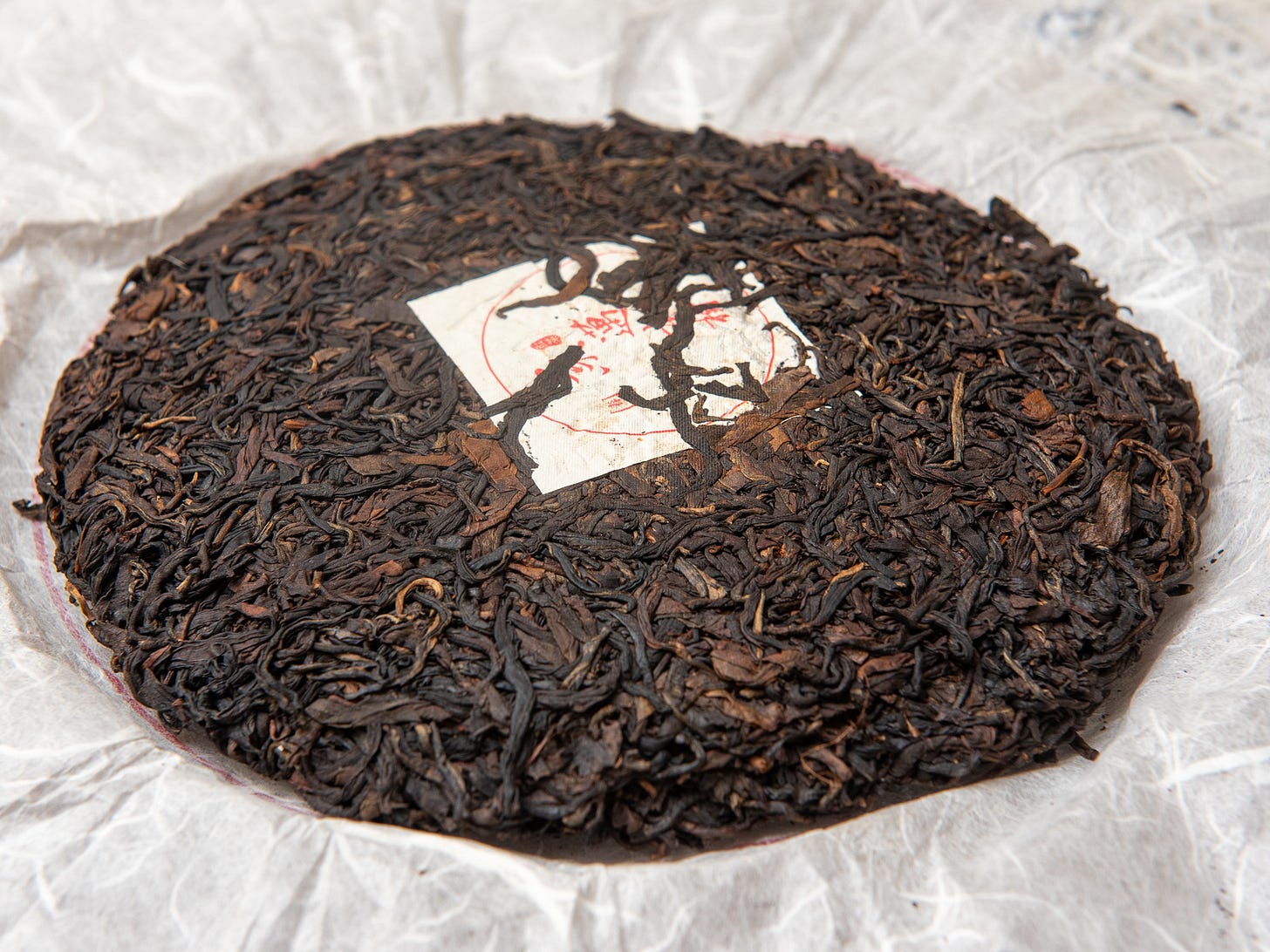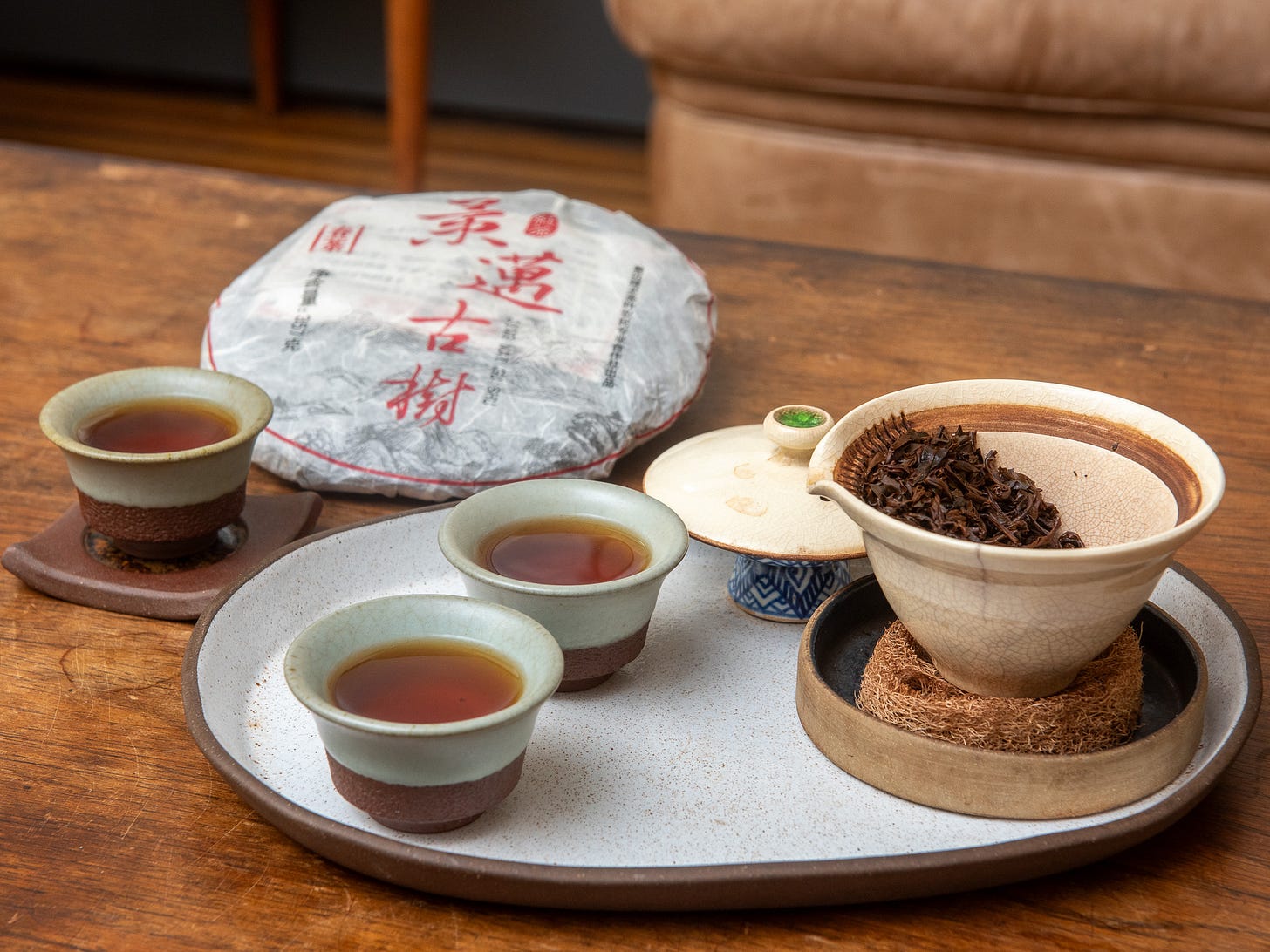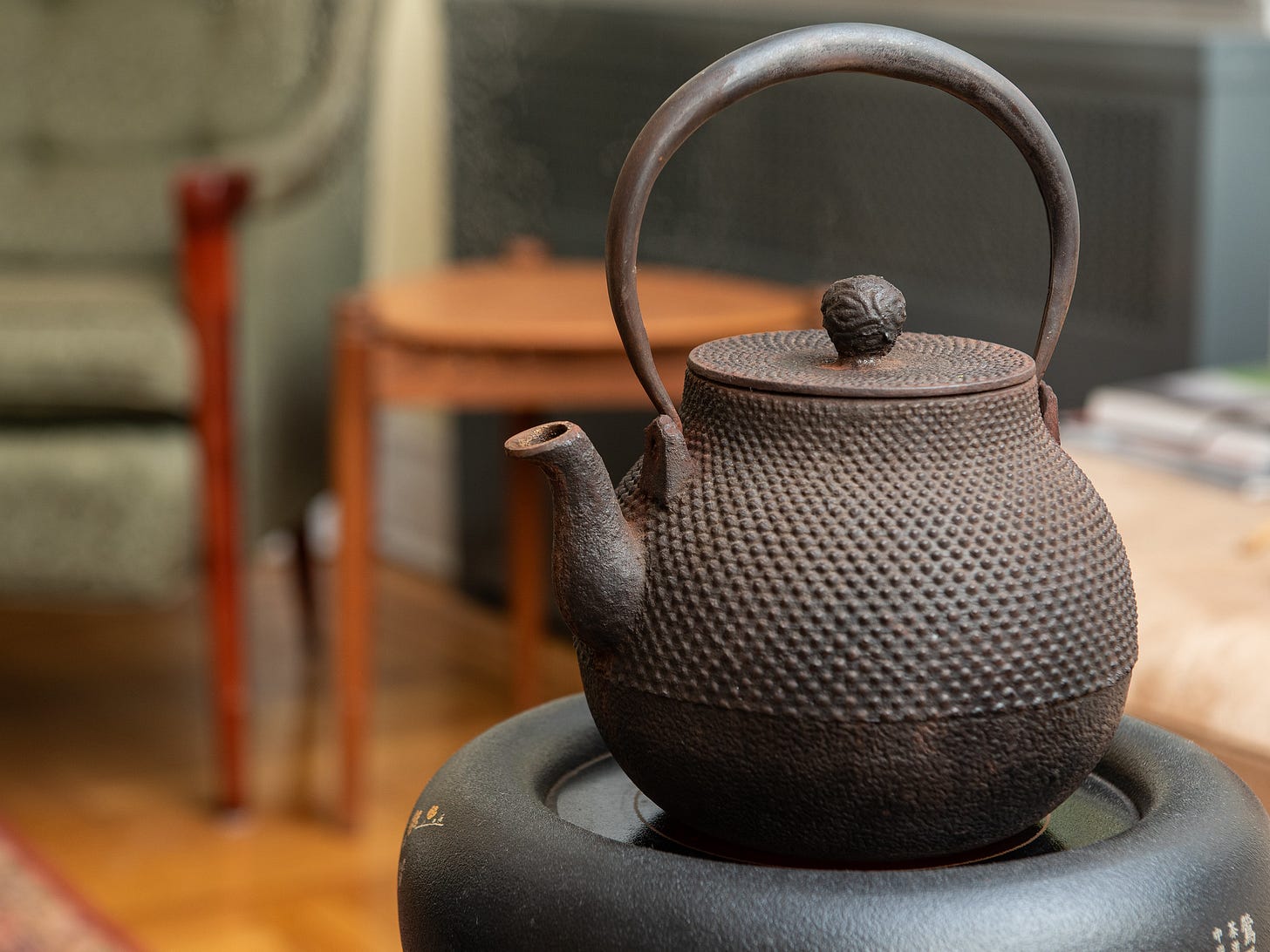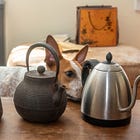How to find and raise a tetsubin
Alluring aged black tea + advice on iron tea kettles.
So good it’ll haunt you
The tea: 2014 Jingmai ancient tree black tea, sold by CC Fine Tea. $125 for 357g.
Do you get into the Halloween spirit? Here’s a tea that’s dark, mysterious, and drinks like a full moon over a haunted forest. It’s a black tea from the mountains of Yunnan made from big and brawny leaves that are usually processed into puer. The leaves were pressed into a cake and have now aged for over a decade, which mellowed out their juicy aromatics in favor of an earthy and woodsy character. The brew is smooth with the smell of old books, a persimmon musk, and a minty finish that hangs around my mouth for a while, like a spectral figure in the distance I can’t quite make out.
Good black teas often gain funky forest-floor characteristics with age. It helps to start with strong leaf, which this material certainly is. Jingmai’s protected forests are pristine environments for old growth tea trees that reach 10 to 20 feet. However aging has quieted this tea down. It whispers with subtle confidence rather than shouts and you’ll feel its presence long after you’ve drained your cup. Pair it with a good ghost story.
The source: Last time we checked in with CC Fine Tea, it was to taste their spring harvest green tea. The Seattle seller also specializes in appealing oolongs from Wuyi and Chaozhou and quality puer from Jingmai. They source puer (and this black tea) from a small family farm with good access to old growth tea trees, and you can compare their puer made from younger and more mature trees to see the difference that plant age can make in the cup.
To brew: I find this tea does best with a heavier dosage than other black teas, say 8 grams for a 150 milliliter pot (about 1g/19ml), and short brew times of 5 to 10 seconds at the start. Expect 8 or 9 infusions this way. See how thick the liquid looks in the photo above? That’s the color I want when steeping an aged black tea. Boiling water is a must. Also take the time to preheat your pot and cups so the tea remains as hot as possible. For a more casual brew, this tea takes well to stuffing the leaves in a large mug or thermos and topping off with hot water. It doesn’t get bitter or astringent. Instead it just takes you deeper into the forest.
Ask a Tea Person: Where can I get a tetsubin?
Welcome back to Ask a Tea Person, Leafhopper’s tea advice column. Check out previous editions here and submit your own questions by emailing max.falkowitz@gmail.com with “Ask a Tea Person” in the subject line.
Your post on tea kettles has convinced me to get my own tetsubin! I was wondering if you had any recommended sources and if I need to do anything to prepare it when it arrives? — Emily G.
Welcome to the ferrous side, Emily! Your question is well timed. During spring and summer I usually stick to my clay kettle, but come colder weather in fall I find myself gravitating more toward my tetsubin. This is partly a reflection of seasonal drinking; I sip more puer and heavily roasted oolong in the fall and winter, and those are the teas I most enjoy with my tetsubin. (Today’s aged black tea thrives with tetsubin water, too.) But there’s also an environmental aspect. My hobnail tetsubin radiates heat when it sits on my tea stove and the setup gives me big “hearth and home” feelings.
You probably know this by now, Emily, but for those playing along at home, tetsubin are cast iron kettles made for boiling water for tea. They’re not teapots, and cast iron vessels sold as teapots are usually coated with a ceramic glaze inside that renders them unsafe for stovetop heating. The glaze also negates the iron’s beneficial effect and the iron used for these pots tends to be low quality, so these pieces are best avoided. However a proper tetsubin is a beautiful thing that can soften, sweeten, and round out the taste of water boiled inside, thanks to the mineral qualities of its iron base. It’s durable functional art that you’ll pass down to the grandkids.
Keep reading with a 7-day free trial
Subscribe to Leafhopper to keep reading this post and get 7 days of free access to the full post archives.



